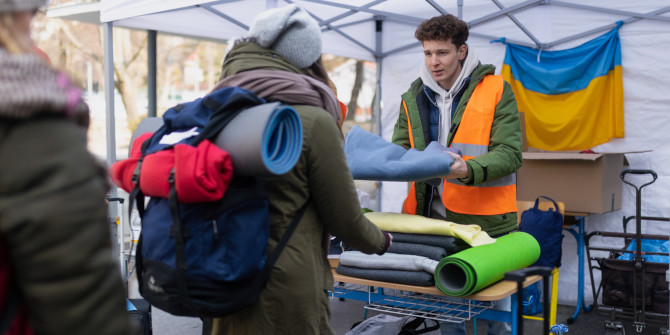EU regulation: Generative AI, copyright infringements and legal responsibility – My guess for a scorching subject in 2024 – Cyber Tech
New 12 months’s fatigue? Or presumably AI fatigue? However the brand new 12 months has solely simply begun! It does look like the subject of AI and copyright was in all places within the copyright world final 12 months. Whereas some digital subjects have been recognized to trigger an amazing commotion in copyright circles solely to later sink virtually and not using a hint, except I’m mistaken, the problem of the copyright implications of AI is completely different.
One AI subject, which has thus far solely been examined in any depth in relation to EU copyright regulation in just a few situations, is copyright infringement by generative AI and the related legal responsibility. On this regard, there are two features that have to be checked out individually, particularly when does AI output represent an infringement and who’s responsible for copyright-infringing AI output?
(1) When does AI output represent an infringement?
In my opinion, the present guidelines ought to apply in answering this query. AI output may be deemed a rights-infringing replica whether it is similar to the unique work. Equally, AI output may be deemed a rights-infringing replica if the unique may be recognised in it. The CJEU based mostly its ruling on this subject in “Pelham” on the facet of recognisability when it got here to the associated proper of the file producer beneath Article 2 of the InfoSoc Directive (2001/29) (C-476/17 – Pelham). The identical ought to apply in relation to the creator’s proper of replica (see, e.g., German Federal Courtroom of Justice (BGH) GRUR 2022, 899 – Porsche 911, which references the Pelham case regulation of the CJEU, C-476/17), even when a last determination from the CJEU on this level, in a case referred by the Swedish courtroom (C-580/23 – Mio i.a.), remains to be pending.
That mentioned, there could also be a limitation on what constitutes a copyright infringement beneath the present guidelines even in instances the place the AI output is similar to the unique or the unique is a minimum of recognisable. This may be the place the generative AI has not been educated utilizing the unique and a state of affairs exists which for works by a human can be described as “impartial (double) creation”. Ought to AI techniques have the ability to profit from the defence of unintended impartial creation? It might appear that we have to discover a solution to this query. If the defence of impartial creation is allowed, the burden of proof that the unique work was not used for the coaching of the generative AI might, because of the circumstantial proof on the contrary, lie with the get together invoking that defence. In Germany, for instance, this may be in keeping with the principles on the burden of proof in instances of impartial creation. The burden of proof for establishing that the youthful work was created independently from the older work lies in precept with the creator of the youthful work. As an exception this rule won’t apply if the older work has little or no originality and the youthful work exhibits substantial variations from the older work (see Axel Nordemann in Fromm/Nordemann, Commentary on the German Copyright Act, 12th version, Part 24 para 64-65 with examples from German case regulation).
(2) Who’s responsible for copyright-infringing AI output?
The query as to the legal responsibility of the consumer of the AI output is comparatively straightforward to reply the place the consumer makes use of the AI output in a fashion which has copyright relevance. Right here, the final guidelines apply. Anybody reproducing AI output (Article 2 InfoSoc Directive), distributing it (Article 4 InfoSoc Directive) or speaking it to the general public (Article 3 InfoSoc Directive) is liable in accordance with the present guidelines.
This brings the case regulation of the CJEU on the idea of communication into play. In response to that idea, even those that solely not directly trigger a communication may be deemed to have carried out an act of communication. The requirement is (1) an indispensable position within the act of communication and (2) the “deliberate nature of the intervention”. Though “deliberate” might sound prefer it means “intentful”, the latter requirement may be glad by a mere negligent violation of sure duties of care (C-682/18 and C-683/18 – YouTube and Cyando). This idea has now additionally been adopted within the nationwide authorized techniques of the Member States, for instance by the German BGH (Federal Courtroom of Justice) (see our earlier publish right here).
One other query is who is definitely responsible for the AI output itself? Is the AI operator liable? There may be at present no particular operator legal responsibility at EU stage for copyright infringements within the space of generative AI. Nonetheless, AI operators could possibly be held liable beneath the final guidelines, albeit usually just for unauthorised replica within the type of the AI output (Article 2 of the InfoSoc Directive). Within the case of software program and {hardware} suppliers who don’t have any method of influencing customers, the CJEU has determined that the aforementioned rules don’t apply (C-426/21 – Ocilion). The German BGH has additionally repeatedly emphasised that legal responsibility as a perpetrator can’t apply to software program suppliers as a result of the software program consumer is mostly the perpetrator with management over the infringement (I ZR 32/19 – Web-Radiorekorder).
Nonetheless, there are a selection of features which might level to not merely making use of the case regulation on using software program on to copyright-infringing AI output. Somewhat, a differentiated method appears extra advisable. Offering an AI system includes extra than simply offering software program that enables customers to create reproductions at their very own discretion. The AI system can considerably decide the content material of the output. One thought would subsequently be to attribute the replica in response to who determines the main target of the content material.
- If the AI is merely a technical device of the consumer and the main target of the willpower lies with the AI consumer (e.g. by its prompts), solely the AI consumer may be thought of as a perpetrator.
- Nonetheless, the state of affairs must be completely different if the main target of figuring out the content material lies with the generative AI. In that case, the replica and the legal responsibility as perpetrator could possibly be attributed to the AI operator. For instance, this may be the case if the AI consumer has solely given very minor specs of their prompts.
The legal responsibility of the AI operator in response to these rules shouldn’t be excluded by the truth that the generative AI produces the rights-infringing AI output in an automatic course of. For different mechanically generated content material – for instance, editorial outcome lists with thumbnails in engines like google – the system operator might however be held liable.
If the generative AI does create the rights-infringing output with out management over the infringement, one shouldn’t rule out all legal responsibility on the a part of the AI operator, nonetheless. In any case, the AI stays the oblique reason for the infringement. Subsequently, one should contemplate whether or not the above talked about CJEU legal responsibility mannequin, taken from YouTube and Cyando, may be utilized right here additionally.
If this mannequin is to be utilized to the legal responsibility of AI operators, it might be needed for the CJEU legal responsibility mannequin from YouTube and Cyando to be prolonged to cowl infringements of the precise of replica beneath Article 2 of the InfoSoc Directive. Till now, the CJEU has solely utilized it to the precise of communication to the general public beneath Article 3 of the InfoSoc Directive. There are numerous arguments in favour of an extension to the precise of replica as a result of even with the fully-harmonised proper of replica beneath Article 2 of the InfoSoc Directive, the query as to who’s doing the replica shouldn’t be left to the EU Member States. On this respect, the identical applies as for the totally harmonised proper of communication to the general public beneath Article 3 of the InfoSoc Directive.
When making use of the legal responsibility mannequin, it appears acceptable to attribute an indispensable position to generative AI for the infringement of the precise of replica. Generative AI is much more carefully concerned within the infringement than video platforms, which the CJEU confirmed as having an indispensable position in YouTube and Cyando. The duties of care of AI operators in the midst of commerce, which decide the deliberate nature of their actions, have to be proportionate after all. Though the mere reality of automation and autonomisation couldn’t eradicate legal responsibility in all instances, it may possibly have a mitigating impact on legal responsibility in relation to defining duties of care, notably within the case of fascinating enterprise fashions. One ought to contemplate whether or not the three duties of care developed by the CJEU for video platforms (para. 102 – YouTube and Cyando) may be utilized in an tailored kind to operators of generative AI techniques.
Conclusion
We copyright legal professionals shouldn’t flip away from inspecting and investigating AI subjects. There may be a lot meat for dialogue within the query of legal responsibility for rights-infringing output of generative AI for instance. A cheerful and profitable new 12 months to all!
That is an tailored model of a German language editorial by the creator for the German IP journal Gewerblicher Rechtsschutz und Urheberrecht (GRUR), Quantity 1/2024. The creator want to thank Adam Ailsby, Belfast, (www.ailsby.com) who authored a lot of the English translation.



